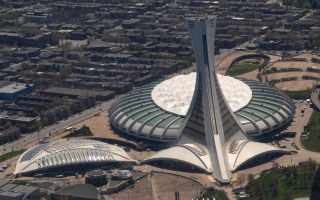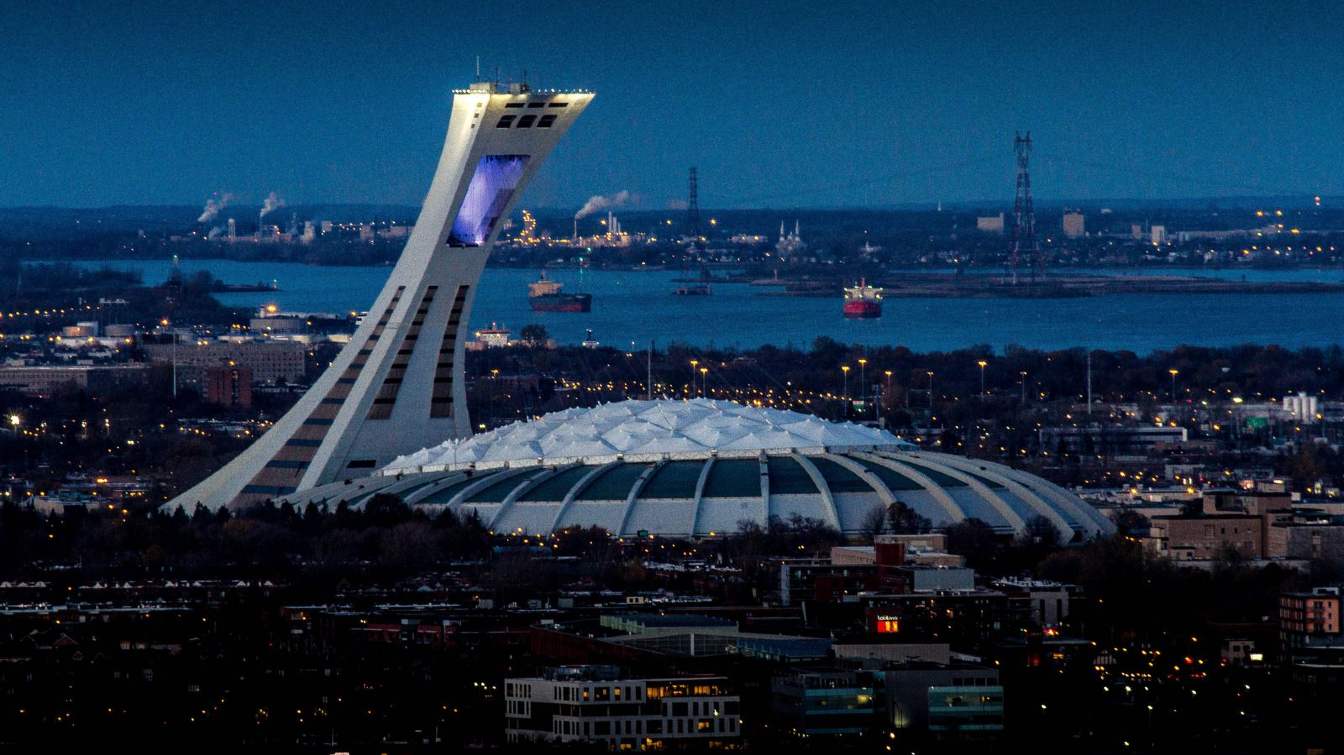Canada: Longer and more expensive renovation of Montreal Olympic Stadium tower
source: StadiumDB.com; author: Paulina Skóra
 The renovation of the iconic inclined tower of the Olympic Stadium in Montreal—one of Canada’s most recognizable architectural landmarks—is set to take longer than initially planned.
The renovation of the iconic inclined tower of the Olympic Stadium in Montreal—one of Canada’s most recognizable architectural landmarks—is set to take longer than initially planned.
Advertisement
Rising costs and delayed deadlines
It is now highly unlikely that the work will be completed in time for the 50th anniversary of the 1976 Summer Olympics, which were held in the city. Moreover, the total cost of the project is expected to increase by $40.6 million above the originally planned budget.
An additional $11.8 million has already been added to the current pool of funds earmarked for the project. These funds will cover extra work, including the replacement of the tower’s cable car, upgrades to the tourist areas, and reconstruction of the rooftop observation deck. As a result, the total cost of the project has now climbed to $122.2 million, compared to the initial estimate of $81.6 million. The project’s completion date has also been pushed back by another 10 months, now scheduled for October 2026. While waiting for major sporting events, such as the 50th anniversary celebrations of the Montreal Olympics, fans often turn to other forms of entertainment, such as sports betting. Canadian players can take advantage of a variety of sports betting sites like Bodog. These updates were outlined in the most recent government report on infrastructure projects in Quebec. This marks yet another delay in the long and controversial history of this structure. It’s worth remembering that the tower was only completed in 1987—eleven years after the Olympics for which it was originally intended.
The pandemic as a turning point
During the pandemic, when the Olympic Stadium was closed to the public, the Olympic Park administration decided to begin long-postponed modernization efforts. This included replacing the aging cable car, renovating the tourist hall, and refurbishing the observation deck with panoramic views of the city. Initially, all work was expected to wrap up by May 2023. However, after terrace reconstruction was added to the scope of the project, the deadline was pushed to October 2024.
In February 2024, yet another delay was announced—this time to January 2026—to align symbolically with the 50th anniversary of the Olympic Games. Unfortunately, according to the latest available data, even this plan appears unrealistic. The current projected completion date is now fall 2026, although the official Olympic Park website states that the tower may remain closed to visitors until late 2027.
Impact on anniversary celebrations
Despite the mounting delays and rising costs, Olympic Park spokesperson Cédric Essiminy has assured the public that the renovation will not interfere with the 50th anniversary celebrations of the 1976 Summer Olympics. These festivities are expected to last for several weeks, or even months, and will include both sporting and cultural events, all aimed at honoring Montreal’s Olympic legacy.
The cost overruns and delays are attributed to the project’s complexity. Renovating the tallest inclined tower in the world presents a unique set of technical challenges. The situation has been further complicated by surging construction material prices, a shortage of skilled labor, and overall pressure on the construction sector in Quebec. Joëlle Brodeur, CEO of Olympic Park, has yet to make any public statements on the matter, while Quebec’s Minister of Tourism, Caroline Proulx, has referred all inquiries to the park’s administration.
Not the only investment
It’s important to recognize that the renovation of the tower is just one component of a much broader and more ambitious revitalization plan for Montreal’s Olympic Stadium and the surrounding Olympic Park. Alongside the work on the tower, one of the most significant and costly undertakings currently in progress is the complete replacement of the stadium’s roof—a structure that has been plagued by technical issues and maintenance problems for decades.
The stadium’s original roof, designed to be retractable, never functioned as intended and was ultimately replaced in the late 1990s with a fixed membrane. However, even this solution proved problematic, leading to frequent tears, leaks, and closures during harsh weather conditions. The new roof, currently being developed, is expected to resolve these longstanding issues. Its design prioritizes structural integrity, improved resistance to extreme weather, and ease of maintenance. The new materials being used are said to be significantly lighter, more durable, and more sustainable than those of the previous iterations.
In addition to the roof replacement, the modernization program encompasses a wide range of technical and infrastructure upgrades. These include the installation of state-of-the-art ventilation and climate control systems to improve air quality and comfort for visitors, as well as a comprehensive overhaul of the stadium’s lighting, sound systems, and electrical networks. These improvements are intended to bring the venue up to modern standards, making it suitable for hosting a diverse array of events—from international sporting competitions and concerts to exhibitions and community gatherings.
While the total cost of the renovations—including the tower, roof, and supporting infrastructure—may ultimately reach up to $1 billion, officials argue that the investment is necessary to preserve the stadium’s legacy, support tourism, and reestablish the Olympic Park as a vibrant cultural and sporting hub for Montreal and the province as a whole.
Worker strike adds pressure
To make matters worse, nearly 200 Olympic Park employees staged a one-day strike on March 31. The protest began at midnight on Sunday and lasted until 11:59 PM on Monday. This was the first of five legally authorized strike days that the union can deploy at its discretion. Among those participating were office staff, accountants, maintenance workers, technicians, communication specialists, and engineers. The union representing the workers is part of the Federation of Public Service Employees, which belongs to the CSN labor federation. Their collective agreement expired on March 31, 2023. While negotiations over working conditions concluded in the summer of 2023, wage discussions were deferred pending broader negotiations within the public and parapublic sectors.
A symbolic challenge
Montreal’s Olympic Stadium has long been a subject of strong public opinion—both admiration and criticism. For many residents, it stands not only as a symbol of the Olympics but also as a reminder of cost overruns and construction controversies. That’s why it is crucial that the current renovation efforts be carried out thoroughly and with the future in mind. Despite the difficulties, there is still hope that the tower, after years of inactivity, will be restored to its former glory and once again become a vibrant meeting place for locals and tourists alike.
Advertisement
 StadiumDB
StadiumDB
